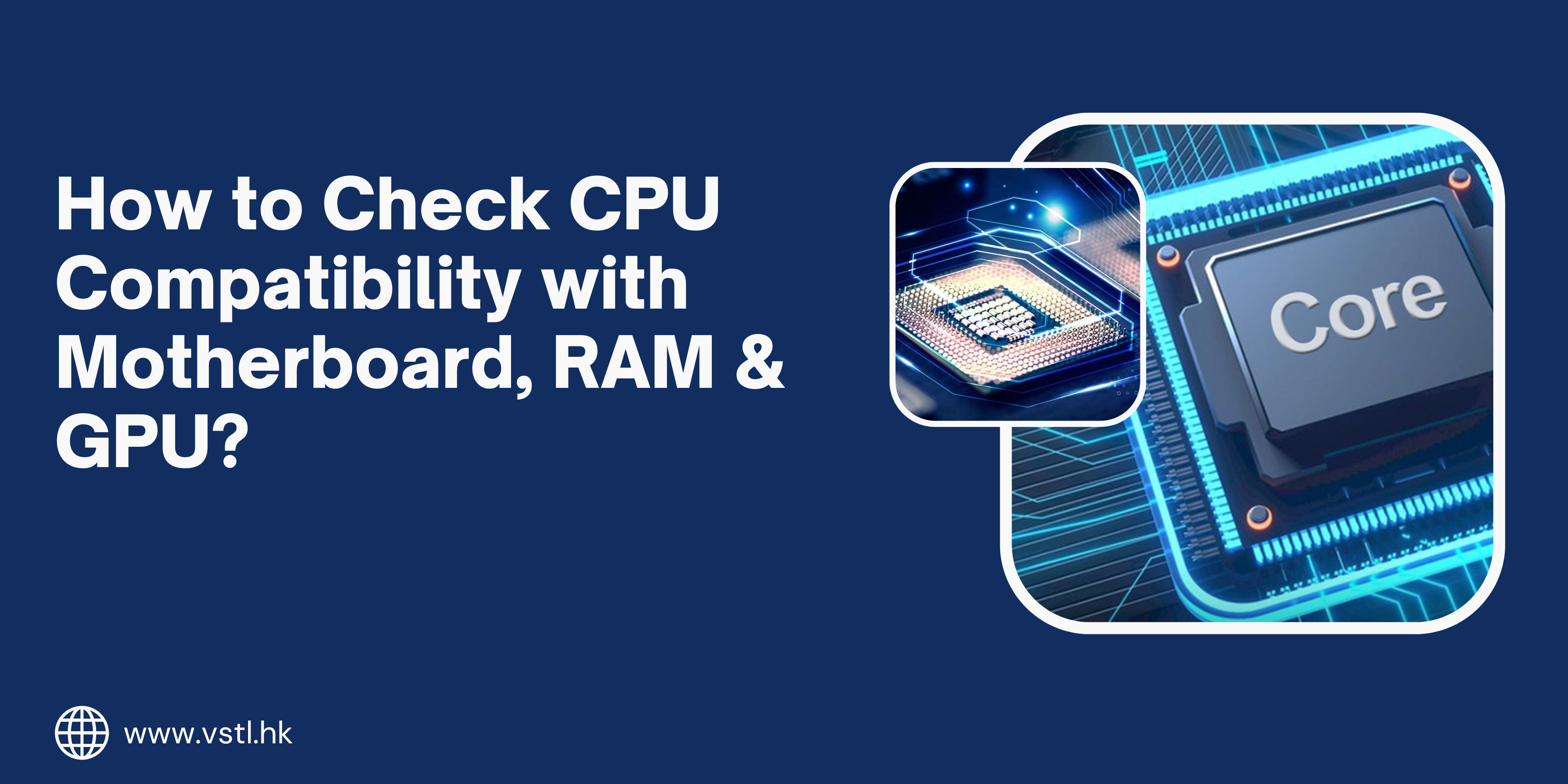
When building or upgrading a PC, CPU compatibility is one of the most crucial yet confusing topics for many buyers. Choosing the wrong combination can lead to bottlenecks, performance issues, or even system failure. Whether you’re a gamer, content creator, or business professional, this guide will help you check CPU compatibility with motherboards, RAM, and GPUs step by step — so you build smart and avoid costly mistakes.
Why CPU Compatibility Matters?
The CPU (Central Processing Unit) is the brain of your computer. But to function efficiently, it must work seamlessly with your other hardware components:
-
A motherboard that matches the socket and chipset
-
RAM that fits the memory type and supports speed
-
A GPU that avoids bottlenecks and power imbalance
Incompatible components can cause boot failures, slower performance, or wasted money on parts that don’t work together.
Let’s break down compatibility in three major parts:
1. CPU and Motherboard Compatibility
a) Match the CPU Socket Type
Every CPU fits into a specific socket on a motherboard. If the socket doesn’t match, the CPU simply won’t fit.
-
Intel examples:
-
12th, 13th, and 14th Gen CPUs use LGA1700
-
Older 10th/11th Gen use LGA1200
-
-
AMD examples:
-
Ryzen 3000/5000/7000 use AM4 or AM5
-
AMD Threadripper uses sTRX4
-
How to Check:
Look at the CPU product page (e.g., Intel Core i7-14700K) → find the socket type → match with a motherboard that supports the same socket.
b) Check Chipset Support
Even if the socket fits, your chipset must support the features of your CPU.
-
Intel Z690, B660, H670 support 12th/13th/14th Gen
-
AMD B550, X570 support Ryzen 3000/5000
-
AM5 motherboards support Ryzen 7000+ series
Tip: Newer CPUs may require BIOS updates on older motherboards. Check the motherboard manufacturer’s website to see if your CPU is listed under “supported processors.”
c) Beware of BIOS Requirements
Some CPUs won’t work unless the BIOS is updated. For example, installing a Ryzen 5700G on a B450 motherboard may fail unless you flash the BIOS first.
✅ Solution: Either:
-
Buy from a vendor that offers “CPU BIOS update support”
-
Choose a newer motherboard that supports your CPU out-of-the-box.
2. CPU and RAM Compatibility
Your RAM must be supported by the CPU and motherboard in terms of type, speed, and channel configuration.
a) RAM Type (DDR4, DDR5)
CPUs and motherboards only support specific RAM generations:
-
Intel 12th/13th/14th Gen: DDR4 or DDR5 (depends on motherboard)
-
AMD Ryzen 7000+: DDR5 only
-
Ryzen 5000 and earlier: DDR4 only
How to Check:
-
Go to your CPU’s product page
-
Look under “Memory Types Supported”
Example:
Intel i5-14600K supports: DDR5-5600 and DDR4-3200
b) RAM Speed (MHz)
Faster RAM boosts performance, but only if your CPU and motherboard can handle it.
-
Most CPUs have a base supported speed (e.g., 5600MHz for DDR5)
-
Speeds beyond that require XMP profiles in BIOS
Tip: For gaming and multitasking, aim for DDR5-6000+ or DDR4-3600 (depending on your build type).
c) Dual vs Quad Channel
Use RAM in pairs (2x8GB, 2x16GB) for best performance. Modern CPUs benefit from dual-channel or quad-channel memory configurations.
Tip: Always check your motherboard manual for RAM slot configuration to activate the correct channel.
3. CPU and GPU Compatibility
Even though CPUs and GPUs are not physically connected, their performance affects each other. An imbalance can lead to bottlenecking.
a) Avoid CPU Bottlenecks
If your CPU is too weak for your GPU, the GPU will wait on the CPU, reducing FPS in games and slowing rendering times.
Example:
Pairing an RTX 4080 with an i3 CPU will waste GPU power.
A better match is Intel i7/i9 or Ryzen 7/9.
Use tools like:
-
PC-Builds Bottleneck Calculator
-
Logical Increments Compatibility Guide
b) Check Power Requirements
High-end GPUs require more power, and your CPU must work with a PSU (power supply) that supports both.
Rule:
-
Add CPU + GPU wattage
-
Ensure your PSU has 20% headroom.
Example:
-
Ryzen 9 7900X (170W) + RTX 4070Ti (285W) = 455W
-
Recommended PSU: 750W+
c) PCIe Version Compatibility
Modern GPUs use PCIe 4.0 or 5.0. Even if your CPU supports PCIe 5.0, your motherboard must also support it.
-
Ryzen 7000 CPUs support PCIe 5.0
-
Intel 13th Gen also supports PCIe 5.0
-
PCIe is backward-compatible, but performance may slightly reduce on lower-gen slots
Tip: Always install your GPU in the first x16 slot for max bandwidth.
Final Checklist for CPU Compatibility
| Component | What to Check | Tools to Use |
|---|---|---|
| Motherboard | Socket + Chipset + BIOS Support | CPU + Motherboard spec sheets |
| RAM | DDR type, speed, and capacity support | PCPartPicker, Manufacturer sites |
| GPU | Bottleneck risk + PSU compatibility | Bottleneck Calculator, PSU calculators |
Recommended Tools and Resources
-
PCPartPicker.com – Build compatibility checker
-
Manufacturer sites like Intel ARK, AMD Product Pages
-
Motherboard QVL Lists (Qualified Vendor List for RAM)
-
YouTube channels: Gamers Nexus, Hardware Unboxed for compatibility testing
Conclusion
Building a PC or upgrading your CPU in 2025 doesn’t have to be complicated — but compatibility is everything. A smart buyer checks socket types, chipset support, RAM specifications, and GPU bottlenecks before investing.
If you follow the steps above, you’ll avoid frustration, save money, and enjoy maximum performance from your system.
